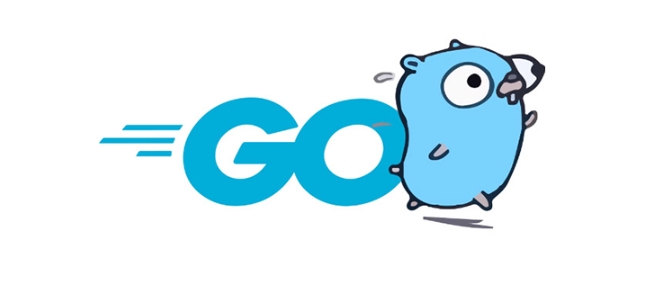What are methods in Go and how are they different from functions?
Aug 01, 2025 am 06:44 AMMethods in Go are functions with a receiver, allowing them to be associated with a specific type, such as a struct, enabling type-specific behavior. 2. Unlike functions, methods have a receiver, use dot notation for invocation on instances, can use value or pointer receivers to control modification and copying, and promote encapsulation by keeping logic tied to types. 3. Use methods when logic belongs to a type, such as implementing behavior or interfaces, and use functions for generic, standalone, or utility operations. 4. A real-world analogy is that methods represent actions performed by an instance, like file.Read(), while functions represent independent operations, like os.Open(). In summary, methods attach behavior to types and are central to Go’s object-oriented style, favoring composition, so if an operation feels like something a type does, it should be a method.

In Go, methods are functions that have a receiver—a special parameter that associates the function with a specific type. This allows you to define behavior for a particular type, similar to how objects have methods in object-oriented languages.

1. What Are Methods in Go?
A method is just like a function, but it belongs to a type. The receiver can be a struct, a basic type, or even a pointer to a type. Here's a simple example:
type Rectangle struct {
Width float64
Height float64
}
// Method with a value receiver
func (r Rectangle) Area() float64 {
return r.Width * r.Height
}Here, Area is a method of Rectangle. The (r Rectangle) part is the receiver declaration.

You call it like this:
rect := Rectangle{Width: 3, Height: 4}
fmt.Println(rect.Area()) // Output: 122. Methods vs Functions: Key Differences
While both methods and functions perform reusable logic, there are important differences:

? 1. Receiver vs No Receiver
- Functions don’t have a receiver.
- Methods have a receiver, which ties them to a type.
// Function (no receiver)
func CalculateArea(w, h float64) float64 {
return w * h
}
// Method (has a receiver)
func (r Rectangle) Area() float64 {
return r.Width * r.Height
}The method feels more natural when working with data types, especially structs.
? 2. Syntax and Invocation
- Functions are called directly:
CalculateArea(3, 4) - Methods are called on instances:
rect.Area()
This makes methods feel more intuitive when modeling domain logic.
? 3. Value vs Pointer Receivers
Methods can have either value receivers or pointer receivers:
// Value receiver (works on a copy)
func (r Rectangle) Area() float64 { ... }
// Pointer receiver (can modify the original)
func (r *Rectangle) Scale(factor float64) {
r.Width *= factor
r.Height *= factor
}Pointer receivers are used when you want to modify the receiver or avoid copying large structs.
Functions can't do this directly—they’d need to take a pointer as an explicit argument.
? 4. Encapsulation and Type Behavior
Methods allow you to define behavior that’s logically tied to a type, promoting cleaner, more organized code.
For example, validation, formatting, or business rules can live with the type:
func (r Rectangle) IsValid() bool {
return r.Width > 0 && r.Height > 0
}With functions, you'd scatter such logic around.
3. When to Use Methods vs Functions
Use methods when:
- The logic is closely tied to a type.
- You're modeling behavior of a data structure.
- You want to implement an interface (e.g.,
Stringer,error).
Use functions when:
- The operation is generic or applies to multiple types.
- It doesn’t naturally belong to one type.
- You're writing utility or helper logic.
For example, a function like Max(a, b int) doesn't need to belong to a type.
4. A Real-World Analogy
Think of a File type:
-
file.Read()→ makes sense as a method (behavior of a file) -
os.Open("path")→ makes sense as a function (creates a file, not tied to an instance)
So:
- Methods = actions on or by an instance.
- Functions = standalone operations.
Bottom line:
Methods are functions with a receiver, letting you attach behavior to types. They’re central to Go’s approach to object-oriented design—simple, explicit, and based on composition rather than inheritance.
It’s not about which is better, but which fits the context. Use methods to give your types behavior, and functions for general-purpose logic.
Basically, if it feels like something the type does, make it a method.
The above is the detailed content of What are methods in Go and how are they different from functions?. For more information, please follow other related articles on the PHP Chinese website!

Hot AI Tools

Undress AI Tool
Undress images for free

Undresser.AI Undress
AI-powered app for creating realistic nude photos

AI Clothes Remover
Online AI tool for removing clothes from photos.

Clothoff.io
AI clothes remover

Video Face Swap
Swap faces in any video effortlessly with our completely free AI face swap tool!

Hot Article

Hot Tools

Notepad++7.3.1
Easy-to-use and free code editor

SublimeText3 Chinese version
Chinese version, very easy to use

Zend Studio 13.0.1
Powerful PHP integrated development environment

Dreamweaver CS6
Visual web development tools

SublimeText3 Mac version
God-level code editing software (SublimeText3)

Hot Topics
 Quick Start: Use Go language functions to implement simple image recognition functions
Jul 30, 2023 pm 09:49 PM
Quick Start: Use Go language functions to implement simple image recognition functions
Jul 30, 2023 pm 09:49 PM
Quick Start: Use Go language functions to implement simple image recognition functions In today's technological development, image recognition technology has become a hot topic. As a fast and efficient programming language, Go language has the ability to implement image recognition functions. This article will provide readers with a quick start guide by using Go language functions to implement simple image recognition functions. First, we need to install the Go language development environment. You can download the appropriate version on the Go language official website (https://golang.org/)
 Quick Start: Use Go language functions to implement simple data encryption and decryption functions
Aug 03, 2023 am 11:29 AM
Quick Start: Use Go language functions to implement simple data encryption and decryption functions
Aug 03, 2023 am 11:29 AM
Quick Start: Use Go language functions to implement simple data encryption and decryption functions. In today's information society, data confidentiality has become particularly important. In order to ensure the confidentiality of data, we usually use various encryption algorithms to encrypt the data. In this article, we will use Go language functions to implement a simple data encryption and decryption function. First, we need to import the crypto/cipher package in order to use the encryption algorithm. We will use AES (AdvancedEncryptionS
 How to correctly call function methods in Go language
Mar 23, 2024 pm 04:15 PM
How to correctly call function methods in Go language
Mar 23, 2024 pm 04:15 PM
Title: How to correctly call function methods in Go language. As an increasingly popular programming language, Go language’s concise and easy-to-understand syntax and powerful concurrency features make it the first choice for many developers. In the Go language, functions are an important basic concept, and calling function methods correctly is one of the keys to writing efficient and readable code. In the Go language, a function is defined through the keyword "func", can accept zero or more parameters, and can return one or more return values. To correctly call function methods, you need
 Quick Start: Use Go language functions to implement simple data crawling functions
Aug 01, 2023 pm 07:21 PM
Quick Start: Use Go language functions to implement simple data crawling functions
Aug 01, 2023 pm 07:21 PM
Quick Start: Use Go language functions to implement simple data crawling functions In today's Internet era, data acquisition and processing are becoming more and more important. As a common data acquisition method, data crawling is widely used in various fields. In this article, I will introduce how to use Go language functions to implement a simple data crawling function to help readers get started quickly. Go language is a statically strongly typed language. Its concise syntax and efficient concurrency performance make it the first choice of many developers. The following will introduce how to implement the Go language function
 The underlying implementation of Go function closure
Jul 25, 2023 pm 03:18 PM
The underlying implementation of Go function closure
Jul 25, 2023 pm 03:18 PM
Function closure is not mysterious at all. It is an entity composed of a function and a reference environment. In Go, a closure is a structure object at the bottom, which contains function pointers and free variables.
 How to write comprehensive unit tests for Go functions
May 02, 2024 pm 01:27 PM
How to write comprehensive unit tests for Go functions
May 02, 2024 pm 01:27 PM
Writing unit tests in Go helps ensure code quality and reliability. Unit testing includes steps such as importing dependencies, setting up objects, defining inputs and outputs, calling functions, and asserting outputs. By using the assertion function from the testing package you can compare the actual output with the expected output. Use the gotest command to run tests and ensure that all tests pass to ensure the accuracy of the Go code.
 Why are functions in my Go program returning incorrect values?
Jun 10, 2023 pm 04:35 PM
Why are functions in my Go program returning incorrect values?
Jun 10, 2023 pm 04:35 PM
In Go programs, the return value of a function is very important. You may run into problems where your function returns the wrong value, or returns no value, which can cause problems with your program. This situation can occur in any size program, and in this article we will discuss some of the possible causes of these problems. Function definition error First, you need to make sure that your function is correctly defined. The function definition should declare the function name, parameter list, and return type. If you forget the return type, Go will default to returning
 How to write maintainable Golang functions efficiently?
Apr 12, 2024 pm 02:33 PM
How to write maintainable Golang functions efficiently?
Apr 12, 2024 pm 02:33 PM
Key guidelines for writing efficient and maintainable Go functions include: keep functions short and concise, focus on a single responsibility, use clear method signatures, check for errors and return clear information, and use documentation comments for comments. Following these guidelines creates code that is clearer, easier to test, and easier to maintain.






